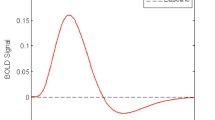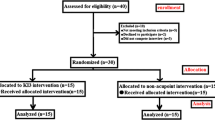Abstract
In recent years research explored different acupuncture stimulation techniques but interest has focused primarily on somatic acupuncture and on a limited number of acupoints. As regards ear Acupuncture (EA) there is still some criticism about the clinical specificity of auricular points/areas representing organs or structures of the body. The aim of this study was to verify through (Functional magnetic resonance imaging) fMRI the hypothesis of EA point specificity using two auricular points having different topographical locations and clinical significance. Six healthy volunteers underwent two experimental fMRI sessions: the first was dedicated to the stimulation of Thumb Auricular Acupoint (TAA) and the second to the stimulation of Brain Stem Auricular Acupoint (BSAA). The stimulation of the needle placed in the TAA of the left ear produced an increase in activation bilaterally in the parietal operculum, region of the secondary somatosensory area SII. Stimulation of the needle placed in the BSAA of the left ear showed a pattern that largely overlapped regions belonging to the pain matrix, as shown to be involved in previous somatic acupuncture studies but with local differences in the left amygdala, anterior cingulate cortex, and cerebellum. The differences in activation patterns between TAA and BSAA stimulation support the specificity of the two acupoints. Moreover, the peculiarity of the regions involved in BSAA stimulation compared to those involved in the pain matrix, is in accordance with the therapeutic indications of this acupoint that include head pain, dizziness and vertigo. Our results provide preliminary evidence on the specificity of two auricular acupoints; further research is warranted by means of fMRI both in healthy volunteers and in patients carrying neurological/psychiatric syndromes.



Similar content being viewed by others
Abbreviations
- EA:
-
Ear acupuncture
- SA:
-
Somatic acupuncture
- TAA:
-
Thumb auricular acupoint
- BSAA:
-
Brain stem auricular acupoint
- fMRI:
-
Functional magnetic resonance imaging
References
Huang W, Pach D, Napadow V, Park K, Long X, Neumann J, Maeda Y, Nierhaus T, Liang F, Witt CM (2012) Characterizing acupuncture stimuli using brain imaging with FMRI—a systematic review and meta-analysis of the literature. PLoS One 7(4):e32960
Chae Y, Chang DS, Lee SH, Jung WM, Lee IS, Jackson S, Kong J, Lee H, Park HJ, Lee H, Wallraven C (2013) Inserting needles into the body: a meta-analysis of brain activity associated with acupuncture needle stimulation. J Pain 14:215–222
Ingvar M (1999) Pain and functional imaging. Philos Trans R Soc Lond B Biol Sci 354:1347–1358
Petrovic P, Ingvar M (2002) Imaging cognitive modulation of pain processing. Pain 95:1–5
Wager TD, Rilling JK, Smith EE, Sokolik A, Casey KL, Davidson RJ, Kosslyn SM, Rose RM, Cohen JD (2004) Placebo-induced changes in FMRI in the anticipation and experience of pain. Science 303:1162–1167
Petrovic P, Kalso E, Petersson KM, Ingvar M (2002) Placebo and opioid analgesia—imaging a shared neuronal network. Science 295:1737–1740
Tracey I, Mantyh PW (2007) The cerebral signature for pain perception and its modulation. Neuron 55:377–391
Romoli M (2010) Auricular Acupuncture Diagnosis. Churchill-Livingstone, Edinburgh
Alimi D, Geissmann A, Gardeur D (2002) Auricular acupuncture stimulation measured on functional magnetic resonance imaging. Med Acup 13:18–21
Bourdiol RJ (1982) Elements of auriculotherapy. Maisonneuve
Technical Supervise Bureau of State (1993) The nomenclature and location of ear acupuncture points. Chinese Standard Publishing House, Beijing
Friston KJ, Holmes AP, Price CJ, Buchel C, Worsley KJ (1999) Multisubject fMRI studies and conjunction analyses. Neuroimage 10:385–396
Cho ZH, Oleson TD, Alimi D, Niemtzow RC (2002) Acupuncture: the search for biologic evidence with functional magnetic resonance imaging and positron emission tomography techniques. J Altern Complement Med 8:399–401
Dieterich M, Brandt T (2008) Functional brain imaging of peripheral and central vestibular disorders. Brain 131:2538–2552
Acknowledgments
This work was supported by the Centre d’Imagerie Biomédicale (CIBM) of the University of Lausanne (UNIL), the Swiss Federal Institute of Technology Lausanne (EPFL), the University of Geneva (UniGe), the Centre Hospitalier Universitaire Vaudois (CHUV), the Hôpitaux Universitaires de Genève (HUG), and the Leenaards and Jeantet Foundations.
Conflict of interest
All the authors certify that there is no actual or potential conflict of interest in relation to this article.
Author information
Authors and Affiliations
Corresponding author
Rights and permissions
About this article
Cite this article
Romoli, M., Allais, G., Airola, G. et al. Ear acupuncture and fMRI: a pilot study for assessing the specificity of auricular points. Neurol Sci 35 (Suppl 1), 189–193 (2014). https://doi.org/10.1007/s10072-014-1768-7
Published:
Issue Date:
DOI: https://doi.org/10.1007/s10072-014-1768-7




